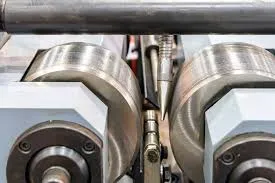
-
 Afrikaans
Afrikaans -
 Albanian
Albanian -
 Amharic
Amharic -
 Arabic
Arabic -
 Armenian
Armenian -
 Azerbaijani
Azerbaijani -
 Basque
Basque -
 Belarusian
Belarusian -
 Bengali
Bengali -
 Bosnian
Bosnian -
 Bulgarian
Bulgarian -
 Catalan
Catalan -
 Cebuano
Cebuano -
 Corsican
Corsican -
 Croatian
Croatian -
 Czech
Czech -
 Danish
Danish -
 Dutch
Dutch -
 English
English -
 Esperanto
Esperanto -
 Estonian
Estonian -
 Finnish
Finnish -
 French
French -
 Frisian
Frisian -
 Galician
Galician -
 Georgian
Georgian -
 German
German -
 Greek
Greek -
 Gujarati
Gujarati -
 Haitian Creole
Haitian Creole -
 hausa
hausa -
 hawaiian
hawaiian -
 Hebrew
Hebrew -
 Hindi
Hindi -
 Miao
Miao -
 Hungarian
Hungarian -
 Icelandic
Icelandic -
 igbo
igbo -
 Indonesian
Indonesian -
 irish
irish -
 Italian
Italian -
 Japanese
Japanese -
 Javanese
Javanese -
 Kannada
Kannada -
 kazakh
kazakh -
 Khmer
Khmer -
 Rwandese
Rwandese -
 Korean
Korean -
 Kurdish
Kurdish -
 Kyrgyz
Kyrgyz -
 Lao
Lao -
 Latin
Latin -
 Latvian
Latvian -
 Lithuanian
Lithuanian -
 Luxembourgish
Luxembourgish -
 Macedonian
Macedonian -
 Malgashi
Malgashi -
 Malay
Malay -
 Malayalam
Malayalam -
 Maltese
Maltese -
 Maori
Maori -
 Marathi
Marathi -
 Mongolian
Mongolian -
 Myanmar
Myanmar -
 Nepali
Nepali -
 Norwegian
Norwegian -
 Norwegian
Norwegian -
 Occitan
Occitan -
 Pashto
Pashto -
 Persian
Persian -
 Polish
Polish -
 Portuguese
Portuguese -
 Punjabi
Punjabi -
 Romanian
Romanian -
 Russian
Russian -
 Samoan
Samoan -
 Scottish Gaelic
Scottish Gaelic -
 Serbian
Serbian -
 Sesotho
Sesotho -
 Shona
Shona -
 Sindhi
Sindhi -
 Sinhala
Sinhala -
 Slovak
Slovak -
 Slovenian
Slovenian -
 Somali
Somali -
 Spanish
Spanish -
 Sundanese
Sundanese -
 Swahili
Swahili -
 Swedish
Swedish -
 Tagalog
Tagalog -
 Tajik
Tajik -
 Tamil
Tamil -
 Tatar
Tatar -
 Telugu
Telugu -
 Thai
Thai -
 Turkish
Turkish -
 Turkmen
Turkmen -
 Ukrainian
Ukrainian -
 Urdu
Urdu -
 Uighur
Uighur -
 Uzbek
Uzbek -
 Vietnamese
Vietnamese -
 Welsh
Welsh -
 Bantu
Bantu -
 Yiddish
Yiddish -
 Yoruba
Yoruba -
 Zulu
Zulu
advanced scaffolding pipe thread rolling machine for enhanced quality production
Understanding High-Quality Scaffolding Pipe Thread Rolling Machines
In the construction industry, safety, efficiency, and durability are paramount. A critical component in achieving these goals is the use of high-quality scaffolding systems, which provide the necessary support and safety to workers at various heights. To ensure that these scaffolding systems are reliable and robust, manufacturers are increasingly turning to advanced equipment such as thread rolling machines. This article explores the significance of high-quality scaffolding pipe thread rolling machines, their working principles, and their role in modern construction.
The Importance of Thread Rolling in Scaffolding
Scaffolding is designed to support both workers and materials on construction sites. To maintain structural integrity and safety, the pipes used in scaffolding must have precisely manufactured threads. These threads facilitate secure connections between different scaffolding components, ensuring that the structure is stable and safe for use.
Thread rolling is a cold-forming process that creates precise threads on the surface of a metal pipe. Unlike traditional cutting methods, which can weaken the material, thread rolling compresses the metal to create durable threads while maintaining the pipe's strength. This method is particularly advantageous for scaffolding applications where tensile strength and robustness are non-negotiable.
Features of High-Quality Thread Rolling Machines
High-quality scaffolding pipe thread rolling machines come equipped with various features designed to optimize efficiency and precision
1. Robust Construction These machines are built using high-grade materials to withstand the rigors of continuous use in manufacturing environments.
high quality scaffolding pipe thread rolling machine

3. Adjustable Settings Operators can adjust the machine settings to accommodate different pipe sizes and thread configurations, providing versatility in production.
4. Automated Processes Many modern thread rolling machines incorporate automation, allowing for faster production rates and reduced labor costs while maintaining consistent quality.
5. User-Friendly Interface With intuitive controls and displays, operators can easily monitor and manage the thread rolling process, ensuring efficient operation.
The Role of Thread Rolling Machines in Quality Assurance
One of the key advantages of using high-quality thread rolling machines in scaffolding pipe production is the control they offer over the manufacturing process. Manufacturers can implement stringent quality assurance measures by closely monitoring thread dimensions and material characteristics throughout the rolling process.
By utilizing advanced thread rolling technology, manufacturers can reduce defects, enhance product consistency, and ultimately provide safer scaffolding systems for construction projects. This not only fosters a safer working environment but also helps companies build a solid reputation for quality and reliability.
Conclusion
As the construction industry evolves, so too does the technology that supports it. High-quality scaffolding pipe thread rolling machines play a crucial role in ensuring that scaffolding systems are safe, durable, and reliable. By leveraging advanced thread rolling techniques, manufacturers can produce top-quality scaffolding components that meet the demanding standards of contemporary construction projects.
In summary, integrating high-quality thread rolling machines into the production process not only enhances product quality but also contributes to the overall safety and efficiency of construction practices. As safety regulations tighten and competition increases, investing in advanced machinery will be vital for manufacturers aiming to excel in the scaffolding industry.
